
Photo Tour: Tucson Cactus
We get rain twice a year here in Tucson -- summer and winter -- which helps to make our area fairly lush for a desert. And, yes, we've got trees here. But the cactus are probably the most fun. The saguaro (pronounced "suh-WAH-roe") might be the most unique. Although you see saguaro cactus in all of the Western movies, they really only grow in a limited part of the US: basically, just this part of the Sonoran Desert in southern Arizona. Here's a look at some of what grows around here.
If you're having trouble seeing both the captions and the photos, try stretching your browser window wider.
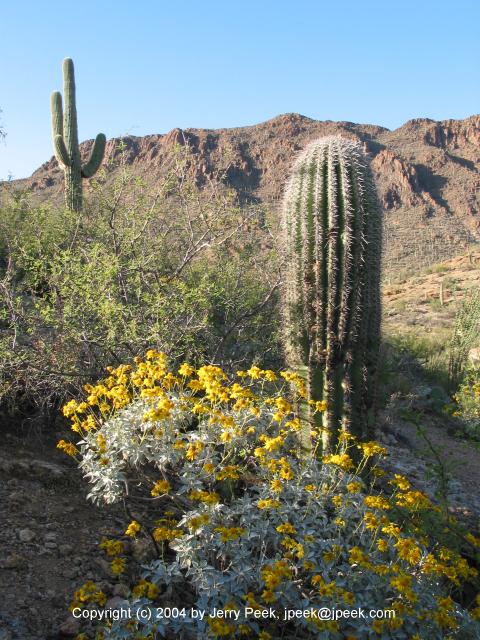 |
A springtime scene in
Tucson Mountain Park, on the western edge of the city
a 10 or 15-minute drive from downtown. The saguaro in the front is young. The one in back is older. They start growing "arms" at about 75 years of age, I've been told. |
 |
Another bunch nearby |
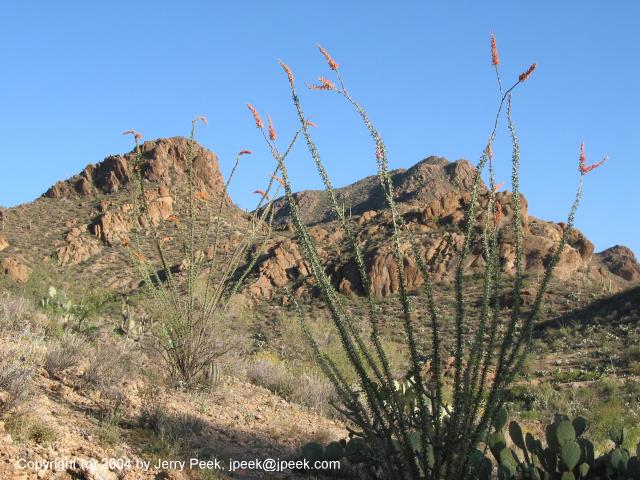 |
West of Tucson Mountain Park,
through the mountain pass, is Saguaro National Park West.
(Saguaro Park also has an eastern half, which is completely
different.)
Here you're out of view of the city with a feeling of wide-open
space. The cactus are ocotillo (pronounced "oh-coe-TEE-yo"), leafy stalks with bright red-orange flowers in the springtime. |
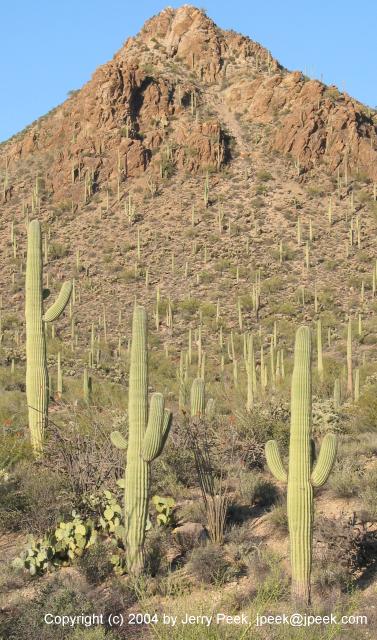 |
Saguaro Park West again,
near sunset. Those round paddle-shaped cactus at the bottom are prickly pear. |
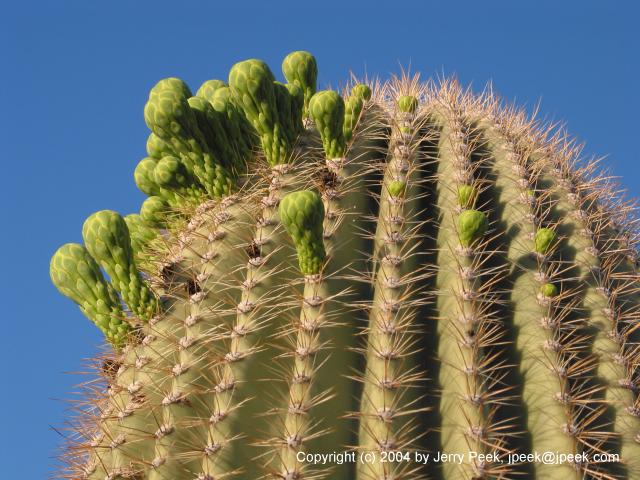 |
In late spring, the
saguaro start to bloom. The flowers are big, white and creamy.
You'll see them perched in clumps at the ends of the branches;
it's a strange and fun sight. This shot is a close-up of the top of a saguaro. Its buds haven't opened yet. |
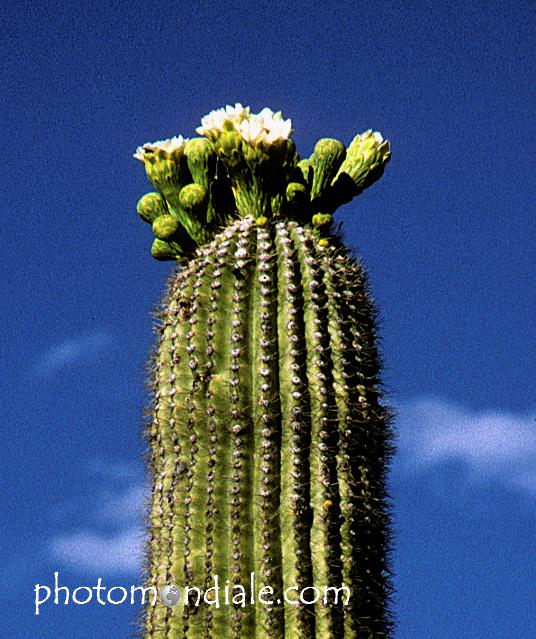 |
Here are some blossoms and buds
on top of a tall saguaro arm. |
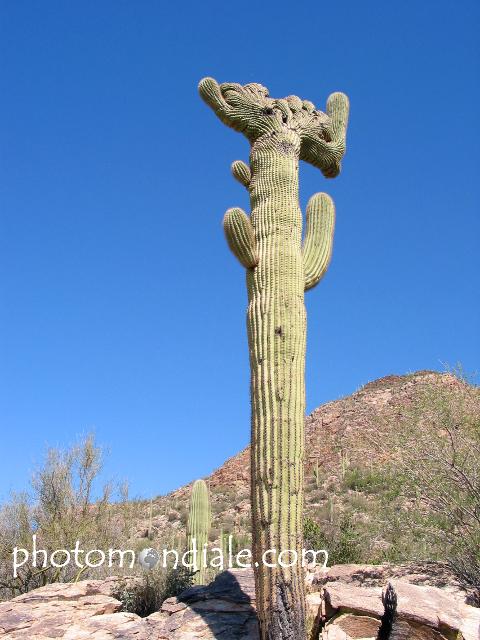 |
The top of this saguaro
was probably damaged as it was growing, so it grew out in
this strange-looking shape. It's called "crested" or "cristate". |
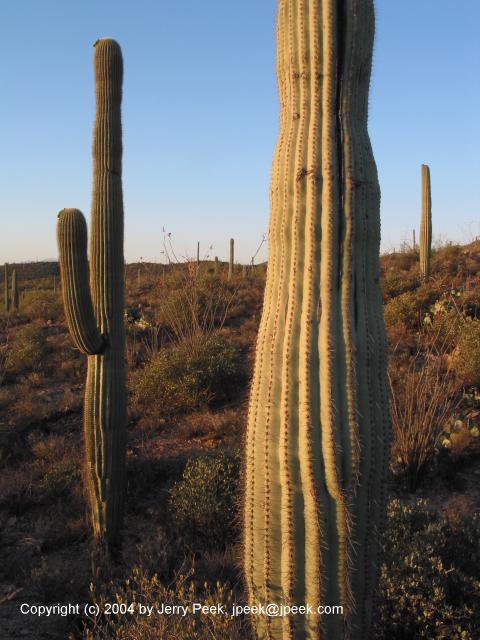 |
Early morning in May along
Anklam Road, on the west edge of Tucson |
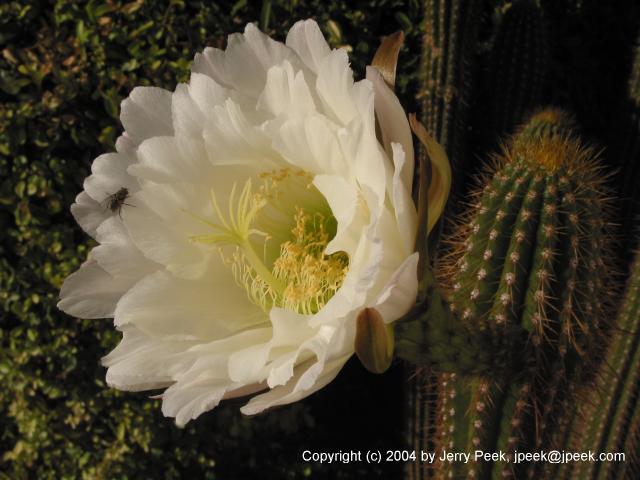 |
The fly flew into the flower
just as I snapped this shot. I'm not sure whether it was looking
for fame on the Internet or if it was just clueless. |
 |
One of the strangest sights
in the desert is the stringy, spiny sticks called Night-blooming
Cereus. Most of the year, these look like they're dead.
But once a year, a bud starts to form... and, one night, the
bud opens into a huge flower.
Catch it that night -- or early the next morning, before the
flower closes for good. If you're lucky, you'll catch a bunch of Night-Blooming Cereus that are all blooming the same night -- this group, for instance, which look a bit like they're marching in a parade. |
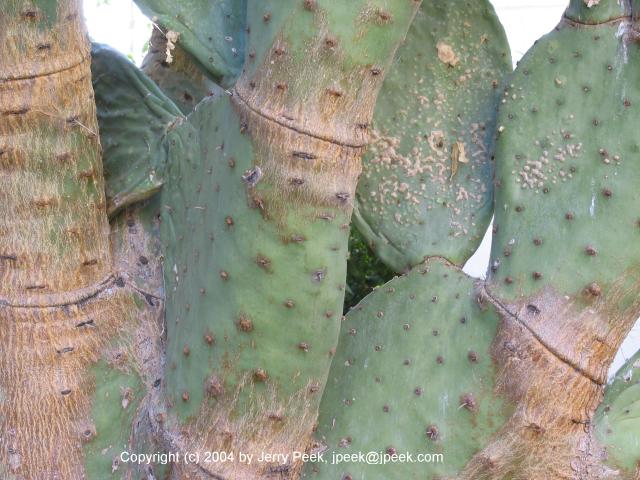 |
Although you don't see
many huge prickly pear, they can grow into a tree if they
get a chance. Here's a close-up near the base of one "tree". |
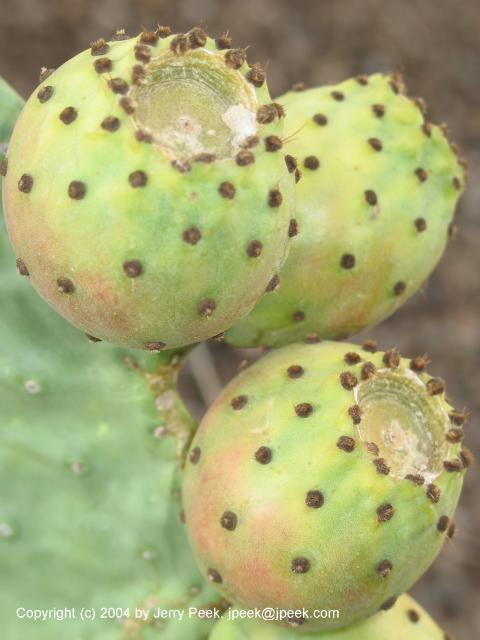 |
Here's another close-up:
at the very end of one of the prickly pear pads. |
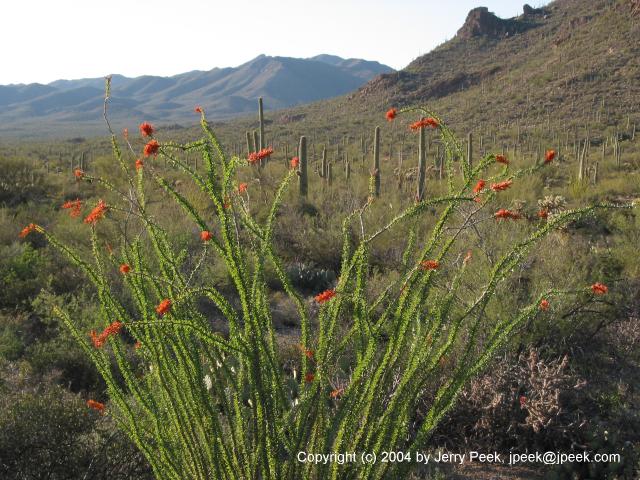 |
I'll wrap up the tour in
Saguaro National Park West, where the
setting sun is lighting up this ocotillo.
This pretty scene is also the site of a battle to stop an invader. Buffelgrass fills the desert floor, taking water from native plants, and threatening to bring fast-spreading and very hot fires. Unlike forests of trees, deserts aren't rejuvenated by fire; they're destroyed. There's more information at buffelgrass.org. |
[Next page: Barrio Viejo]
[Tucson tour]
[Other tours]
(These photographs are Copyright © 2004 or 2009 by Jerry Peek. Much higher-resolution versions of most images, and many other images too, are available at Jerry Peek Photography. Photos are available at reduced prices, or free, for non-commercial use.)